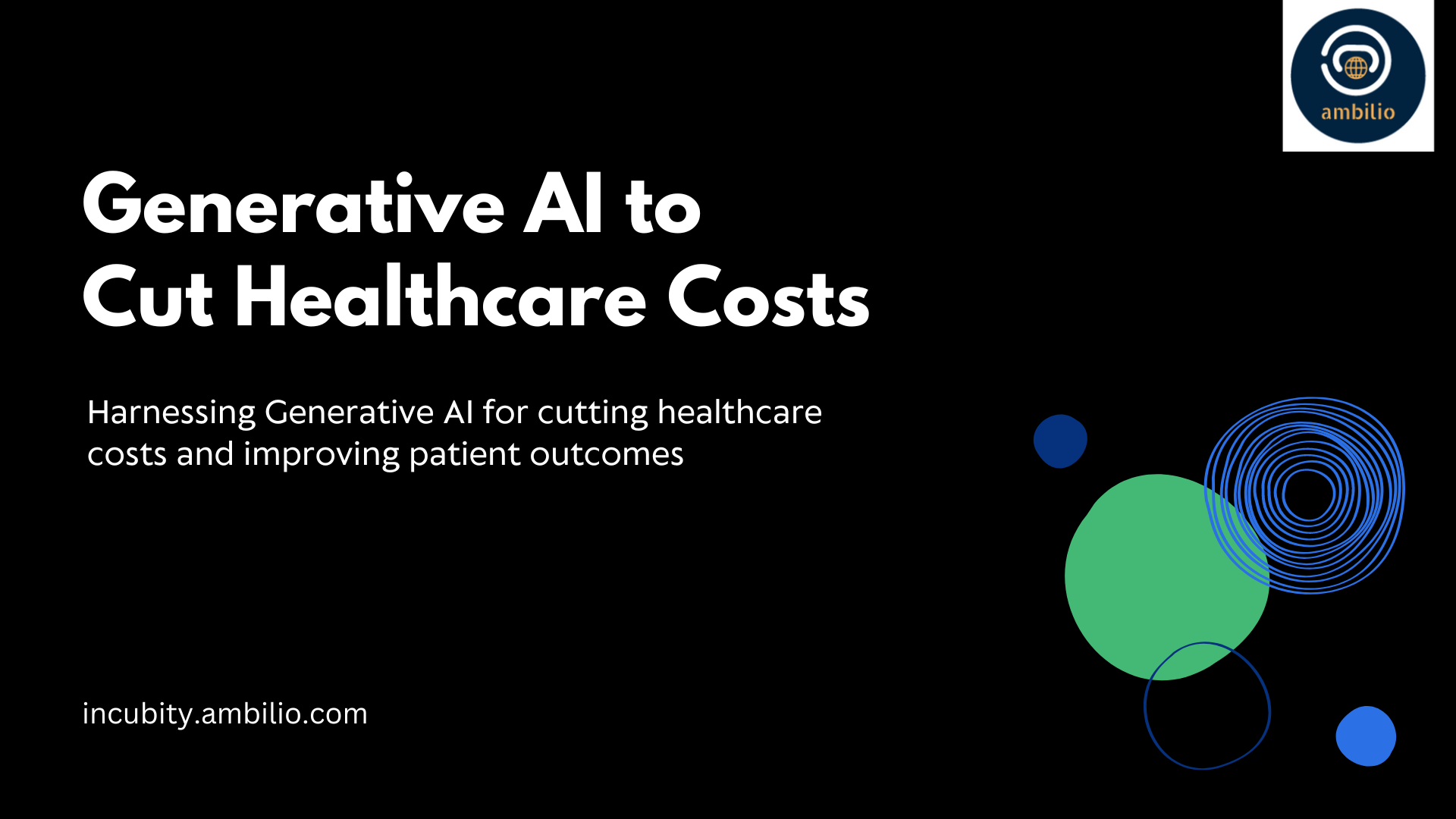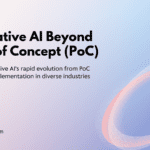Healthcare costs have been rising steadily across the globe, creating a financial burden on both patients and healthcare systems. Generative AI to cut healthcare costs, a branch of artificial intelligence focused on creating new data and solutions from existing information, holds significant promise for addressing these challenges. By enhancing efficiencies, streamlining operations, and improving patient outcomes, generative AI can substantially reduce healthcare costs. This article delves into how generative AI to cut healthcare costs can achieve this in various facets of healthcare.
Generative AI to Cut Healthcare Costs
As the financial pressures on healthcare systems continue to mount, it is crucial to explore innovative solutions. Generative AI to cut healthcare costs emerges as a transformative tool with the potential to address these economic challenges. By automating tasks, optimizing resource management, and enhancing patient care, generative AI offers a multifaceted approach to reducing expenses. Let’s delve into the specific approaches through which generative AI to cut healthcare costs can be effectively implemented, ensuring that healthcare becomes more affordable and accessible for all stakeholders involved.
Streamlining Administrative Processes
Administrative tasks are a substantial part of healthcare expenses, especially in systems like that of the United States, where administrative costs account for a significant portion of total healthcare expenditure. Generative AI can revolutionize these processes by automating and optimizing a wide range of administrative functions, thereby reducing the need for human intervention and cutting costs.
One of the most time-consuming administrative tasks is the processing of insurance claims and authorizations. Traditionally, this involves a lot of manual effort, including verifying patient details, checking coverage, and communicating with insurers. Generative AI can streamline this process by quickly analyzing and verifying information, flagging discrepancies, and even predicting approval outcomes based on historical data. This not only speeds up the process but also reduces the labor costs associated with these tasks.
Additionally, generative AI can enhance patient communication. Healthcare providers often need to send appointment reminders, follow-up care instructions, and health tips to patients. Generative AI can automate these communications, ensuring they are personalized and timely. This improves patient engagement and adherence to medical advice, which can lead to better health outcomes and lower costs in the long run.
Maintaining accurate provider directories is another area where generative AI can make a significant impact. Keeping these directories up-to-date manually is labor-intensive and prone to errors. Generative AI can continuously update these directories by cross-referencing multiple data sources, ensuring that patients always have access to accurate and current information about healthcare providers.
Enhancing Operational Efficiencies
Operational inefficiencies are a major driver of healthcare costs. Generative AI can optimize resource management and improve operational workflows within healthcare facilities, leading to significant cost reductions.
For example, resource management in hospitals involves predicting patient admission rates, managing bed occupancy, and allocating medical staff. Generative AI can analyze historical data and current trends to forecast patient admissions accurately, allowing hospitals to optimize staffing levels and bed usage. This ensures that resources are used efficiently, reducing waste and improving patient care.
Patient flow within hospitals can also be optimized using generative AI. By analyzing patient data and hospital workflows, AI can identify bottlenecks and suggest improvements. For instance, it can recommend optimal scheduling for surgeries and other procedures to minimize waiting times and ensure smooth transitions between departments. This not only enhances patient satisfaction but also reduces the costs associated with delays and inefficiencies.
Inventory management is another critical area where generative AI can drive cost savings. Hospitals and clinics need to maintain a delicate balance of medical supplies to avoid both shortages and overstocking. Generative AI can predict usage patterns based on historical data and automate the restocking process. This minimizes the costs associated with expired or unused supplies, ensuring that resources are available when needed without excessive waste.
Reducing Clinician Burnout
Clinician burnout is a significant issue in the healthcare industry, with substantial financial implications. It is estimated that clinician burnout costs the U.S. healthcare system approximately $4.6 billion annually due to factors such as reduced productivity, increased turnover, and medical errors. Generative AI can help alleviate this problem by automating routine and time-consuming tasks, allowing clinicians to focus more on patient care.
One way generative AI can reduce burnout is by automating the documentation process. Generating patient discharge summaries, care plans, and shift change notes can be extremely time-consuming for clinicians. Generative AI can handle these tasks efficiently, producing accurate and comprehensive documents based on patient data. This not only saves time but also reduces the risk of errors in documentation.
Generative AI can also provide real-time decision support to clinicians. By analyzing patient data and offering insights, AI systems can assist in diagnosis and treatment planning. This reduces the cognitive load on clinicians and helps them make more informed decisions quickly. For example, AI can highlight potential diagnoses that a clinician might not have considered or suggest personalized treatment plans based on the latest medical research and patient history.
In the realm of telehealth, generative AI-powered virtual assistants can handle routine patient inquiries and preliminary assessments. This reduces the workload on healthcare providers and allows them to prioritize more critical cases. These virtual assistants can gather patient information, provide initial medical advice, and schedule appointments, improving efficiency and patient satisfaction.
Accelerating Drug Discovery and Development
The process of drug discovery and development is notoriously lengthy and costly, often taking over $2.6 billion and 10-15 years. Generative AI can significantly accelerate this process, leading to substantial cost savings in the pharmaceutical industry.
Predictive modeling is one of the key areas where generative AI can make a difference. AI can analyze vast datasets, including chemical properties, biological interactions, and clinical trial outcomes, to predict the efficacy of new drug compounds. This allows researchers to identify promising candidates more quickly and efficiently than traditional methods.
Clinical trials, a critical phase in drug development, can also benefit from generative AI. AI can optimize the design and management of clinical trials by identifying suitable candidates, predicting patient responses, and monitoring outcomes in real-time. This reduces the duration and cost of trials, enabling faster and more cost-effective development of new drugs.
Another promising application of generative AI is the repurposing of existing drugs. By analyzing existing medications and their effects, AI can identify new therapeutic uses for these drugs. This approach can significantly shorten the time and cost required to bring effective treatments to market, as the safety profiles of these drugs are already well understood.
Improving Diagnostics and Treatment
Accurate and timely diagnostics are crucial for effective treatment, and generative AI can enhance these processes significantly. AI algorithms can analyze medical images, such as X-rays, MRIs, and CT scans, with high accuracy, assisting radiologists in detecting abnormalities and diagnosing conditions more quickly and accurately. This not only improves patient outcomes but also reduces the costs associated with misdiagnosis and delayed treatment.
Generative AI can also contribute to the development of personalized treatment plans. By analyzing a patient’s medical history, genetic information, and other relevant data, AI can help doctors devise customized treatment strategies that are more effective and efficient. Personalized treatments can lead to better health outcomes, reducing the need for costly interventions and hospital readmissions.
Moreover, generative AI can assist in monitoring and managing chronic diseases. For patients with conditions like diabetes, heart disease, or asthma, AI can analyze data from wearable devices and electronic health records to provide real-time insights and alerts. This proactive approach helps in managing the disease more effectively, preventing complications, and reducing healthcare costs.
Final Words
Generative AI to cut healthcare costs holds immense potential through its ability to streamline administrative processes, enhance operational efficiencies, alleviate clinician burnout, accelerate drug discovery and development, and improve diagnostics and treatment. By leveraging generative AI to cut healthcare costs, healthcare systems can become more efficient, cost-effective, and capable of providing better care to patients. As technology continues to evolve, the integration of generative AI to cut healthcare costs will likely play an increasingly vital role in transforming the industry and addressing the financial challenges it faces.



